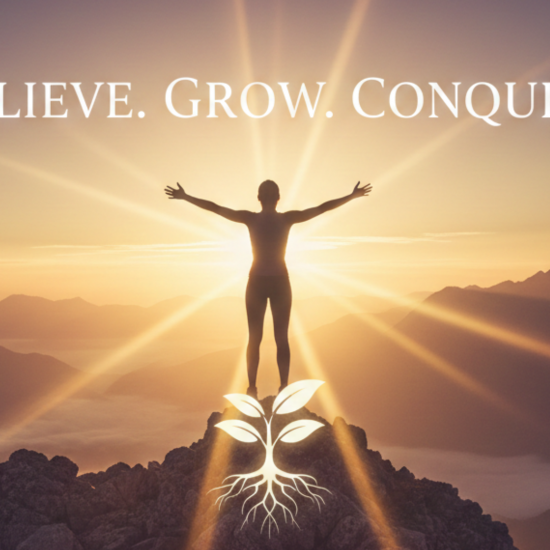Do you ever catch yourself picturing a better version of your life where you’re more confident, successful, and fully in control? That mental image isn’t just wishful thinking. Your brain treats imagined experiences much like real ones. Visualization, when used intentionally, becomes a powerful bridge between where you are now and the future you want to create. Today, top confidence coaches and career coaches use guided imagery not as a feel-good exercise, but as a neuroscience-backed technique to rewire mindset, sharpen focus, and build confidence from within. By helping clients mentally rehearse their success, they help them take more aligned, courageous action in real life.
What Is Visualization?
Visualization is the mental practice of picturing a future event, action, or version of yourself. It involves imagining with as much detail as possible seeing, hearing, and even feeling the success you’re working toward.
Athletes have used visualization for decades to mentally rehearse victory. But it’s not just for sports. Leaders, creatives, public speakers, and career changers use this practice to calm nerves, boost belief, and create intentional results.
In coaching, visualization becomes a strategic tool not just inspiration, but transformation.
What Neuroscience Reveals About Visualization
Studies in cognitive neuroscience show that visualizing an experience activates similar neural pathways as the real experience. When you vividly imagine something, your brain fires the same regions involved in perception, movement, and emotion.
Here’s what happens when you visualize:
- The brain generates mental images that feel real to your nervous system.
- Mirror neurons activate, helping your body prepare for that future.
- The reticular activating system (RAS) begins filtering opportunities aligned with your imagined vision.
- Stress levels decrease when you rehearse outcomes in a safe, internal space.
- Belief systems shift as your mind gets comfortable with new possibilities.
In short, consistent visualization helps you embody the identity of your future self before it physically happens.
How Coaches Use Visualization for Confidence and Career Growth
A career coach confidence approach doesn’t just teach job strategies. It helps you emotionally and mentally step into the version of yourself that’s ready for success. Visualization bridges the gap between where you are and where you want to be.
Let’s explore how a confidence coach might use guided imagery:
1. Future Self Visualization
Clients are guided to imagine their future selves confident, successful, grounded. The exercise may include:
- What are you wearing?
- How do you feel when you walk into a room?
- What kind of energy do you carry?
- How are others responding to you?
- What are you doing that you once feared?
By emotionally connecting with this future self, clients begin to embody that version in their current actions.
2. Performance Rehearsal
Whether it’s a job interview, a big presentation, or starting a new role, coaches help clients mentally rehearse the event.
This reduces anxiety, increases clarity, and strengthens self-trust. The mind becomes familiar with the experience, making it easier to follow through with confidence.
3. Rewiring Limiting Beliefs
Visualization helps reframe fear-based beliefs. A coach might guide a client to visualize themselves facing a past fear, with a different outcome.
For example, instead of visualizing a failure, they picture speaking clearly, being heard, and feeling proud. This mental reprogramming softens past trauma and builds new emotional associations.
4. Anchoring Positive States
Coaches use visualization to anchor states like confidence, calm, or creativity. By pairing visualization with breathwork or physical gestures, clients learn to recall those states in high-stress moments.
This creates emotional resilience and better performance under pressure.
The Role of Visualization in Career Confidence
When you’re switching careers or aiming higher, fear and self-doubt often kick in. Visualization counteracts those fears by training your mind to normalize the success you’re seeking.
A career coach uses this technique to:
- Help you see yourself as qualified
- Mentally prepare yourself for interviews
- Reinforce your leadership identity
- Break through impostor syndrome
- Reconnect you with purpose and motivation
By seeing yourself as already capable, you begin making aligned decisions that match that reality.
Client Example: From Nervous to Empowered
Take Tara, a talented analyst who wanted to become a product manager but doubted her ability. With her coach, Tara began visualizing herself leading a team meeting, confidently explaining product strategy, and managing challenges with ease.
At first, the image felt fake. But over weeks of consistent guided visualization, Tara’s tone shifted. She spoke up more at work. She started applying to PM roles. And within three months, she got an offer and walked into her new job feeling ready, not anxious.
This wasn’t magic. It was mental training meeting consistent coaching support.
Why Visualization Works Better with Coaching
On your own, visualization might feel like daydreaming. With a confidence coach, it becomes targeted and strategic. Coaches ensure:
- The imagery is emotionally rich and specific
- It aligns with your goals and values
- You reinforce it through action and reflection
- You don’t get stuck in fantasy, but use it for transformation
Visualization alone doesn’t create results; visualization plus aligned action does.
Common Visualization Mistakes (and How Coaches Correct Them)
Mistake 1: Being too vague
“I want to be successful.” Coaches help define what success looks and feels like, making the image tangible.
Mistake 2: Only visualizing outcomes
Coaches encourage visualizing the process, not just the win—showing up, trying again, handling obstacles.
Mistake 3: Ignoring emotions
Without feeling the visualization, the brain won’t register it. Coaches guide clients to fully embody the emotional state of the future self.
Mistake 4: Doing it once and expecting results
Visualization needs consistency. Coaches build it into regular practice, like journaling or morning routines.
Simple Visualization Exercise to Try
Here’s a quick exercise to get started:
- Find a quiet space. Close your eyes.
- Picture yourself 6 months from now, confident, fulfilled, aligned.
- What are you doing? Where are you? Who are you with?
- Notice how you feel. Confident? Calm? Excited?
- Anchor that feeling by placing your hand on your heart or breathing deeply.
Repeat daily, especially before big decisions or moments of doubt.
See It, Then Be It
Visualization isn’t wishful thinking—it’s mental rehearsal for the life you’re building. By engaging your brain’s power to imagine, feel, and align with your goals, you become the person who naturally creates those results.
A skilled confidence coach or career coach uses visualization not just to inspire you, but to rewire your beliefs, emotions, and behaviors.
Your future self is already waiting.
Are you ready to see them and become them?





